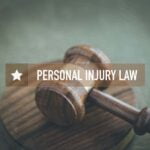Pain and Suffering Injury Compensation

A lot has been said about fraudulent tort claims choking the justice system and costing tax payers billions every year. While some of these may be truly frivolous claims, not all claims for pain and suffering (also called general or non-economic damages) are fraudulent.
Unfortunately, this misconception has led even genuine and fair compensation seekers to be stigmatized. In fact, the notoriety surrounding such cases is such that many settle for far less than what they are entitled to by taking the first offer they receive.
If you are about to make this mistake, wait! This could impact your well-being for years to come. Continue reading before you make your decision.
What is the need for non-economic damages when the plaintiff is already compensated for the financial losses?
“Restitutio in integrum” – This is the term used to describe the purpose of the legal remedies available in tort claims. In simple words, it means that the compensation has to be such that it places the plaintiff in the position that she would have been in had the accident not occurred. Just ask:
- • What if the pain persists long after the outer wounds have healed?
- • What if the suffering continues for years after the accident?
- • What if the economic damages are not enough to restore the plaintiff to the position that he would have been in had the mishap not occurred?
Think of pain and suffering compensation as the justifiable answer to all of these questions. General damages are a way to make up for the long-term repercussions of the physical injuries on the life of an individual.
Pain and suffering damages: Much more than what they seem on the surface!
“Pain and suffering” is really too narrow a term to adequately explain what is covered after physical injuries are sustained and treated. Actually, general compensation is in effect a cumulative claim for four different aspects of compensation:
- Emotional distress: Physical pain is a known cause of depression. Even if it slowly goes away as the wounds heal, it does leave behind fear, anxiety and lack of confidence in its wake. Accident victims often suffer from Post-Traumatic Stress Disorder (PTSD) and develop a fear of driving, walking and being on the road. Obviously, these emotional problems can seriously impact their life even long-term.
- Long-term physical ramifications: Depending on how serious the injuries were, a person may have long term and even permanent loss of mobility. Living with a physical disability can be daunting and overwhelming both financially and mentally. Not to mention, it can change family dynamics. In cases of serious injuries, the chronic physical pain can impede an individual’s attempt to go back to working and living normally in the way they did before an injury.
- Loss of life quality:It is normal to grieve the loss of the physical and mental abilities that a person had before the accident. Worry follows quickly on the heels of grief and disappointment as the victim realizes that things may never go back to being the way they were. This is bound to cause sleepless nights and eat away at a person’s ability to enjoy life or to even pursue enjoyment. Added to the inconvenience of repeated hospital stays, medical procedures, tests and doctor’s visits, it is easy to understand how a person’s quality of life is affected after an accident.
- Impact on personal and professional associations: If the injuries lead to cognitive and speech deficits or other physical incapacities, these would impact a person’s ability to form and maintain personal and professional relationships.
General compensation is meant to cover all of this, along with the loss of companionship, mental anguish due to property loss/damage and more.
How are pain and suffering damages calculated?
Most insurance companies use a computer software for calculating general damages. These programs are designed to arrive at a figure based on the injuries sustained and the treatment sought for them. But there is a problem with this. Two people can have the same injuries and the same economic damages, but their pain and suffering can be very different. Each person has unique hobbies and responsibilities and will be affected by the same injury in very different ways.
Of course, nobody is denying that computer programs are good at math. But these programs have not yet mastered the skill of considering, let alone calculating, human emotions. In addition to those programs, two other methods are used by the insurance company in an attempt to minimize and computerize the compensation:
- • A multiplied amount: The economic cost of the injury is multiplied by 1 to 5 times and this is offered as general damages.
- • Per day amount: Known as “per diem” method, this involves setting a dollar amount for each day between the time of the accident and the time at which the plaintiff reaches the point of maximum recovery. Notice the use of the term “maximum recovery”, which does not always imply “complete” recovery.
How do Kansas Laws treat general damages?
Under the initiative to introduce tort reforms and minimize instances of frivolous litigation, the state has set a cap on the amount that can be recovered in general damages.
- • $300,000 for injuries that have occurred before June 30, 2018.
- • $325,000 for injuries that occur before June 30, 2022.
- • $350,000 for injuries that occur after June 30, 2022.
The statute of limitations for personal injury claims is 2 years. Additionally, you cannot seek compensation for general damages from the at-fault motorist’s insurance company unless you suffer with:
- • Medical treatment costs that exceed $2,000.
- • Permanent scarring or disfigurement.
- • A broken weight-bearing bone.
- • A compressed, compound or complex fracture.
- • Loss of bodily function.
- • Amputation.
- • Permanent injury.
- • Death.
Damage that exists but is hard to prove!
Since you don’t have medical bills to back your claims of pain and suffering, general damages can be hard to prove. This is always the weak spot of your compensation claim, and one that is often exploited and targeted by insurance companies.
Just because Kansas has set a cap of general damages, don’t expect insurance providers to simply cough up the maximum amount. These organizations thrive by paying you as little as possible. But an experienced attorney can tip the scale in your favor.
In our experience, we see initial offers start higher just because an experienced attorney is involved and brings the threat of litigation. Contact DeVaughn James Injury Lawyers today and we will make sure that you get a fair and full settlement, including compensation for the physical pain, mental anguish, and long-term effects of the injuries.









